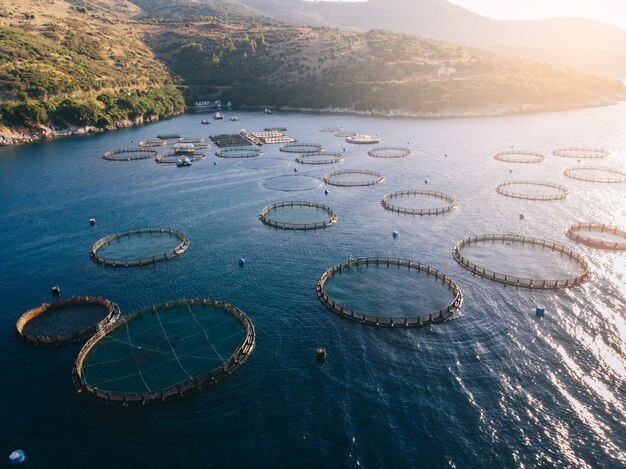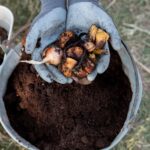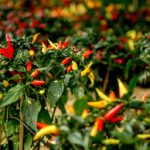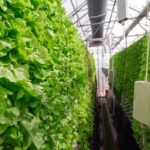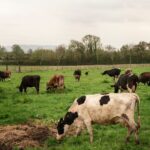Fish farming, also known as aquaculture, is a rapidly growing industry in South Africa, offering lucrative opportunities for farmers. However, it is a delicate business that requires careful management to avoid common pitfalls. Understanding and avoiding mistakes in fish farming can significantly improve productivity, fish health, and overall profitability. Here are 10 common mistakes South African fish farmers should avoid to ensure the success of their operations.
1. Poor Site Selection
Choosing the wrong location for a fish farm can lead to numerous problems, including poor water quality, inadequate space, and accessibility issues. The site must have access to clean water, be free from pollution, and have the right environmental conditions for the specific type of fish being farmed.
Solution: Conduct thorough site assessments before starting a fish farm. Consider water sources, water temperature, and proximity to markets. Additionally, ensure the area has minimal risks from pollution and other environmental hazards.
2. Inadequate Water Quality Management
Water quality is the most critical factor in fish farming. Improper water pH, temperature, oxygen levels, and ammonia content can cause fish stress, poor growth, or even death. Many farmers underestimate the importance of maintaining ideal water conditions.
Solution: Regularly monitor water quality using water testing kits or automated systems. Ensure water pH, temperature, and oxygen levels are optimal for the species being farmed. Consider investing in aeration systems to improve oxygen levels and filtration systems to manage waste.
3. Overstocking Fish Tanks or Ponds
Overstocking is one of the most common mistakes in fish farming. When too many fish are kept in a small space, the water quality deteriorates quickly, and the fish may suffer from stunted growth, disease outbreaks, and even mortality.
Solution: Follow recommended stocking densities for each species. Ensure that the fish have enough space to grow and that there is proper circulation of water. Overstocking can lead to significant losses, so always prioritize fish welfare.
4. Improper Feeding Practices
Feeding is a crucial part of fish farming. Overfeeding can lead to water contamination, waste accumulation, and unnecessary costs, while underfeeding can stunt fish growth. Many farmers fail to manage feeding schedules effectively.
Solution: Develop a proper feeding plan based on the species’ dietary needs and growth stages. Use quality, appropriate feed and avoid overfeeding. Feeding schedules should be aligned with fish growth patterns, and any leftover feed should be removed to prevent water contamination.
5. Neglecting Fish Health and Disease Management
Fish diseases can quickly spread throughout a farm and cause significant losses. Many farmers fail to implement proper health management protocols, leading to disease outbreaks that could have been avoided.
Solution: Implement regular health checks and vaccinations if necessary. Invest in biosecurity measures to prevent the introduction of diseases, such as quarantining new stock before introducing them to the farm. Maintain good hygiene by cleaning tanks and ponds regularly.
6. Lack of Knowledge About the Fish Species
Different species of fish have different requirements in terms of water temperature, feeding habits, and space. Farming a species without understanding its needs can result in poor productivity and health problems.
Solution: Conduct research on the species you wish to farm. Ensure that you understand their specific requirements for temperature, feeding, water quality, and space. Consider consulting with aquaculture experts or extension services for guidance.
7. Inadequate Waste Management
Fish farming produces organic waste that, if not managed properly, can pollute the environment and lead to poor water quality. Many farmers overlook the importance of waste management, which can affect the health of their fish and the surrounding ecosystem.
Solution: Implement a waste management system that includes proper filtration, regular pond cleaning, and efficient handling of waste materials. Consider using waste as fertilizer for plants or crops in integrated farming systems to minimize environmental impact.
8. Not Using the Right Equipment
Using outdated or improper equipment can result in inefficiencies and losses. Poor quality or malfunctioning equipment can affect water quality, feeding systems, and fish handling.
Solution: Invest in high-quality equipment such as aerators, pumps, filtration systems, and feeding devices. Regularly maintain and upgrade equipment to ensure optimal performance. Using the right equipment reduces labor costs and improves farm efficiency.
9. Ignoring Market Research
Fish farmers often make the mistake of farming a species without fully understanding market demand. This can lead to overproduction of certain fish, which may result in lower prices or difficulty in finding buyers.
Solution: Conduct market research before starting fish farming. Identify which fish species are in demand in your local and export markets. Stay updated on market trends and prices to ensure that your production aligns with consumer demand.
10. Failure to Comply with Regulations
Aquaculture is regulated to ensure environmental sustainability and the health of fish populations. Many farmers fail to comply with legal requirements, leading to fines or farm shutdowns.
Solution: Familiarize yourself with local and national regulations related to aquaculture. This includes water use, waste disposal, and disease management. Stay updated on any changes to regulations and ensure that your farm adheres to all necessary standards and practices.
Fish farming offers significant potential for South African farmers, but avoiding these common mistakes is key to success. By properly selecting your site, maintaining water quality, managing stock densities, and investing in good equipment, you can build a sustainable and profitable aquaculture business. Consistent monitoring, education, and adherence to best practices will help you achieve long-term success in fish farming.
Join 'Farmers Mag' WhatsApp Channel
Get the latest Farming news and tips delivered straight to your WhatsApp
CLICK HERE TO JOIN
